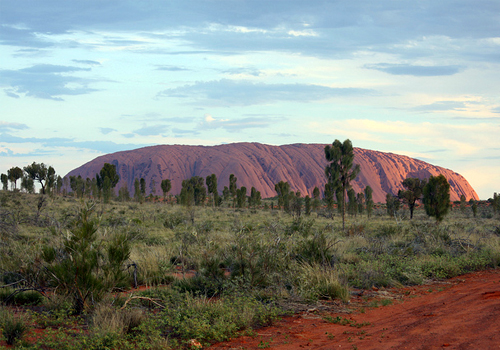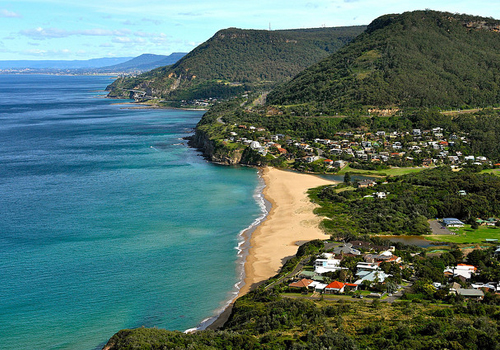Australia Travel Guide
Australia is politically divided into six states and two territories, each one offering a different experience for the traveller. There is the drama of the remote 'Outback', the colourful spectacle of the Great Barrier Reef and its coral islands, the excitement of the big, efficient cities, the sun and surf at some of the best beaches in the world, and the tropical rainforests of Western Australia. The list is endless in this diverse land of adventure, which boasts about 2,000 national parks and 14 World Heritage-listed areas, along with more than 7,000 beaches.
Australia is a land of character too, with its melting pot of cultures. For more than 50,000 years the Aboriginal people lived and thrived in the continent's unique environment. It is believed the Aboriginals are one of the world's oldest surviving civilisations, and recent years have seen a resurgence of interest in keeping the Aboriginal culture alive and flourishing in Australia.
This vast continent at the bottom of the world was the last landmass to be discovered by European explorers. Captain James Cook arrived in Botany Bay in 1770 and sparked off waves of emigration to Australia, which for some time served as a penal colony. It was not until 1860 that two explorers - Robert Burke and William Wills - became the first Europeans to cross Australia from south to north. The country remains a magnet for modern explorers and adventurers and has a great deal to offer tourists and holidaymakers.
Bushwalking
What the rest of the world calls hiking or trekking, Australians
call bushwalking. The term is used to describe both multi-day
trails through national parks and wilderness areas, and leisurely
walks through urban parks. Australia invites travellers to explore
extremely diverse and impressive landscapes, including desert,
rainforest, mountains and beautiful coastlines, and it is
undoubtedly one of the best hiking destinations in the world.
The most popular multi-day hikes in Australia include the
Thorsborne Trail of Queensland, looping the beautiful Hinchinbrook
Island; the Fraser Island Great Walk, exploring the UNESCO-listed
sand island; the Wilderness Coast Walk along the coastlines of
Victoria and New South Wales; the glorious Overland Track of
Tasmania; and the Cape to Cape Track of Western Australia.
Serious hiking enthusiasts keen on a real adventure should
tackle the longer Australian treks, like the Larapinta Trail of the
Northern Territory, a 16 to 20-day trail through the spectacular
West MacDonnell Mountain Range, or the Australian Alps Walking
Track, a 45 to 60-day trek through the mountains of New South Wales
and Victoria.
Those wanting something more leisurely will find that every
state and territory of Australia offers pleasant, well-kept
bushwalking trails.
Diving
The Great Barrier Reef off the Queensland coast is the most
magnificent marine wilderness and natural reserve in the world, and
as such draws divers and snorkellers by the multitude. Jumping off
point for those coming to explore the Reef is the city of Cairns.
As it is a vast area (the reef is approximately 1.2 miles/2,000km
long) visitors need to choose their destination carefully and plan
well. The northern reef section runs from Papua New Guinea to
Townsville and is not so frequented by tourists. There are some
resort islands, but only a few charter boats cover the area and
these usually only on multi-day excursions. Most visitors find the
most charter and tour options operate between Port Douglas and
Townsville, where a multitude of operators offer day trips. All
operators are strictly monitored and have to abide by rules and
regulations to ensure diving in this region is safe.
Although Queensland boasts many of the best diving sites, New
South Wales also promises travellers several good dive
destinations, most notably Byron Bay and Jervis Bay. Victoria,
South Australia, Western Australia, Tasmania and the Northern
Territory also have a lot to offer scuba divers and
snorkellers.
Australia is a year-round diving destination, but the water is
warmer between September and April, making this the most popular
time to explore underwater.
Surfing
With no shortage of waves, warm waters, consistent breaks and a
glowing reputation, the east coast region is the hub of Australia's
surfing scene and the best place to hunt for waves. The only
downside is that these waters tend to be overcrowded, but that is
the price for popularity.
Victoria is a surfer's dream paradise with world-renowned Bell's
Beach, the point break of which, called the Bowl, is a must. Other
popular breaks include Southside, Centreside, Rincon, Boobs and the
popular location of Winki Pop, known to work better under more
diverse conditions than other nearby waves.
Superbank stretches from Snapper Rocks Point on the border of
Queensland and New South Wales, through Rainbow Beach, the old
Greenmount Headland, Coolangatta Beach, and Kirra, for around three
miles (5km) and is a recognised and well-frequented break. Curl
Curl, colloquially known as Curly, is renowned for some of the best
surfing in New South Wales, together with the popular and
overcrowded Bondi Beach and Avalon Beach.
Western Australia offers Margaret River, the place where four
times world champion Mark Richards experienced his first junior win
in 1973, and close by is the notorious exposed right-hand reef
break, The Box. Heavy, but amazing, this is the most consistent
break on the west coast and works best with easterly offshore winds
with southwest swell. At Gnaraloo, Tombstones is a heavy barrelling
left-hander that is best surfed from August through February and
definitely not for the faint-hearted.
The southwest coast has some excellent offerings with fewer
surfers to contend with, although the waves are heavy and the water
cold and sharky, while Shipsterns and Clifton Beach just off the
coast of Tasmania also boast some fun but gnarly waves.
Dedicated surfers should take a road trip to discover the many
secret spots found along this vast stretch of coastline while
beginners can enjoy an unforgettable surf experience at one of the
many highly-rated surf schools.









